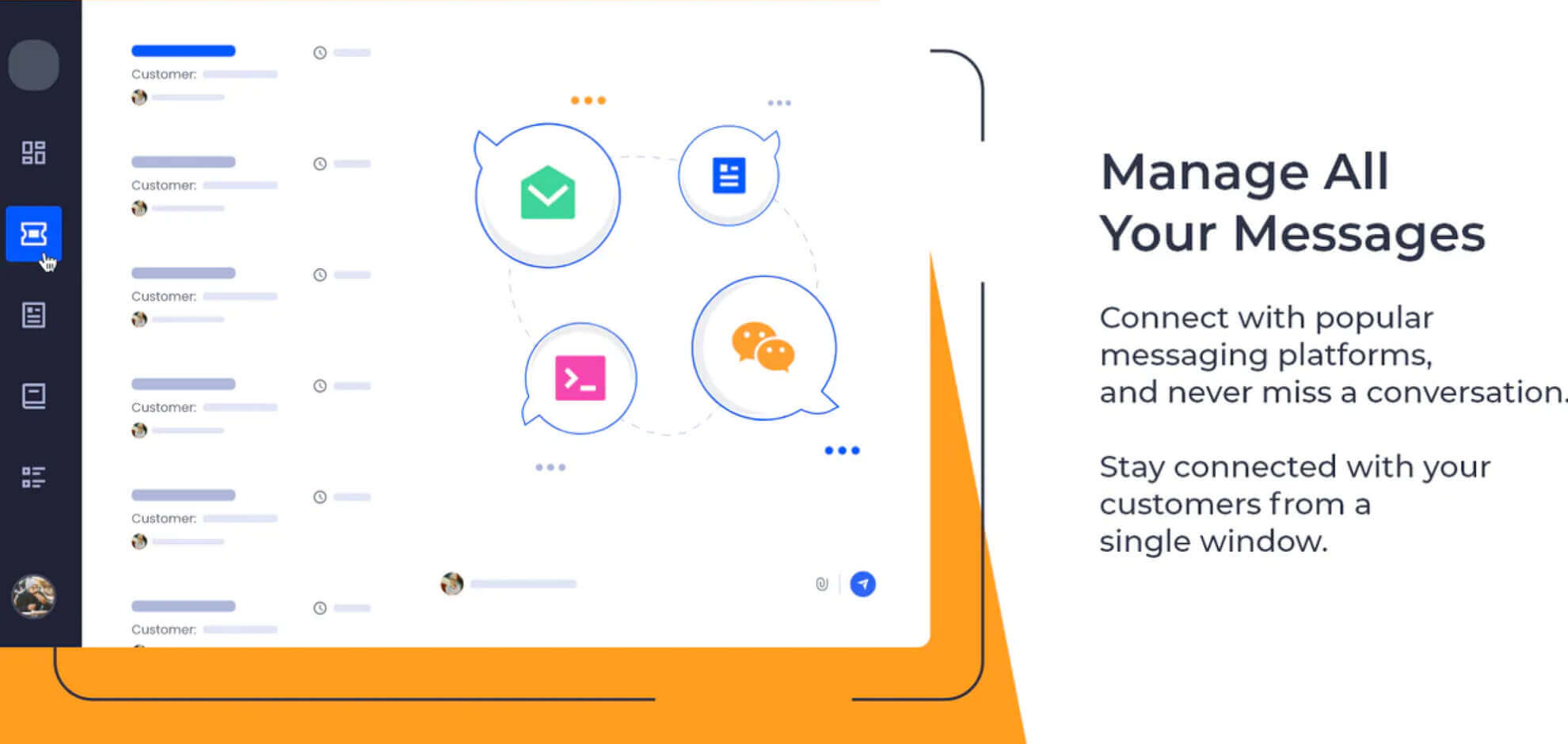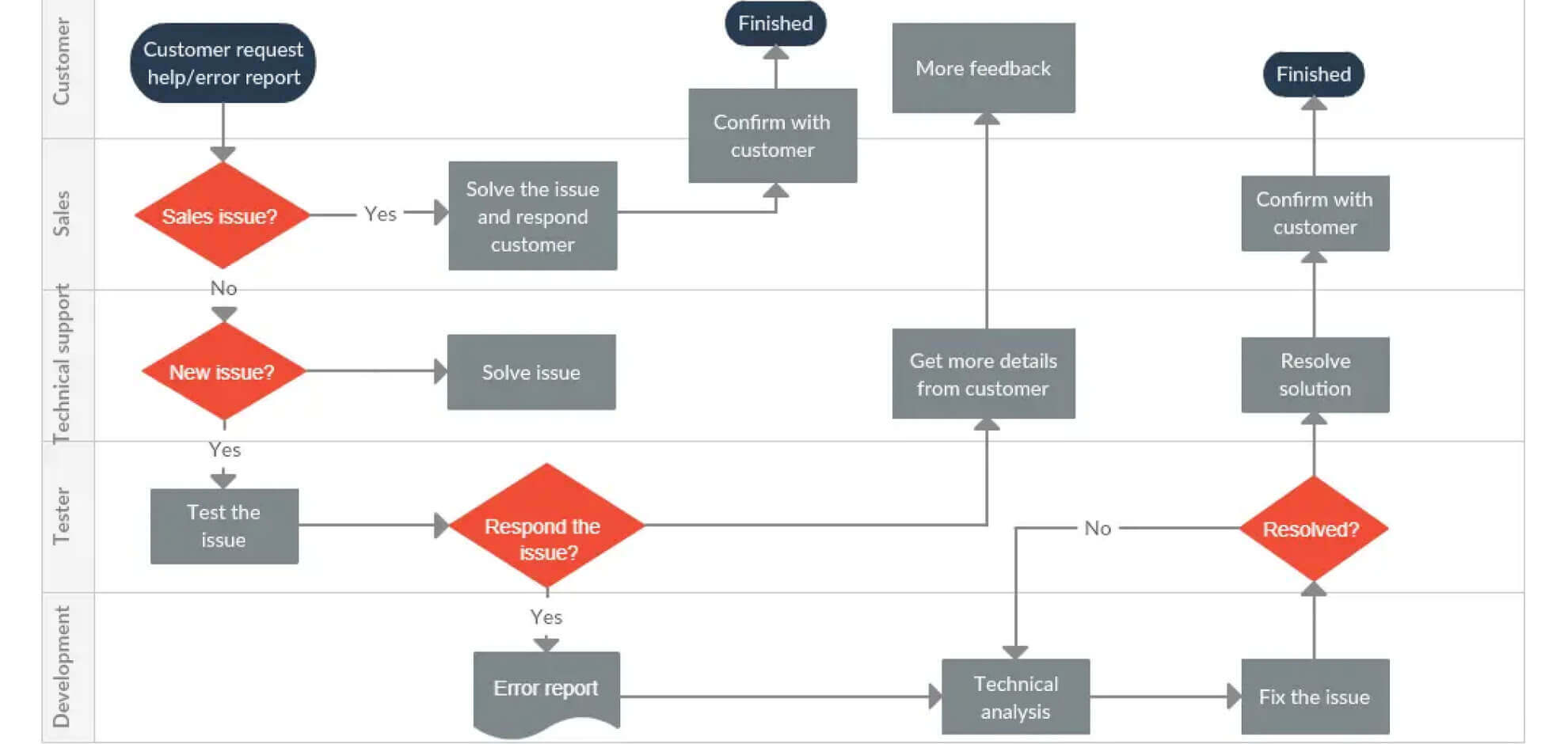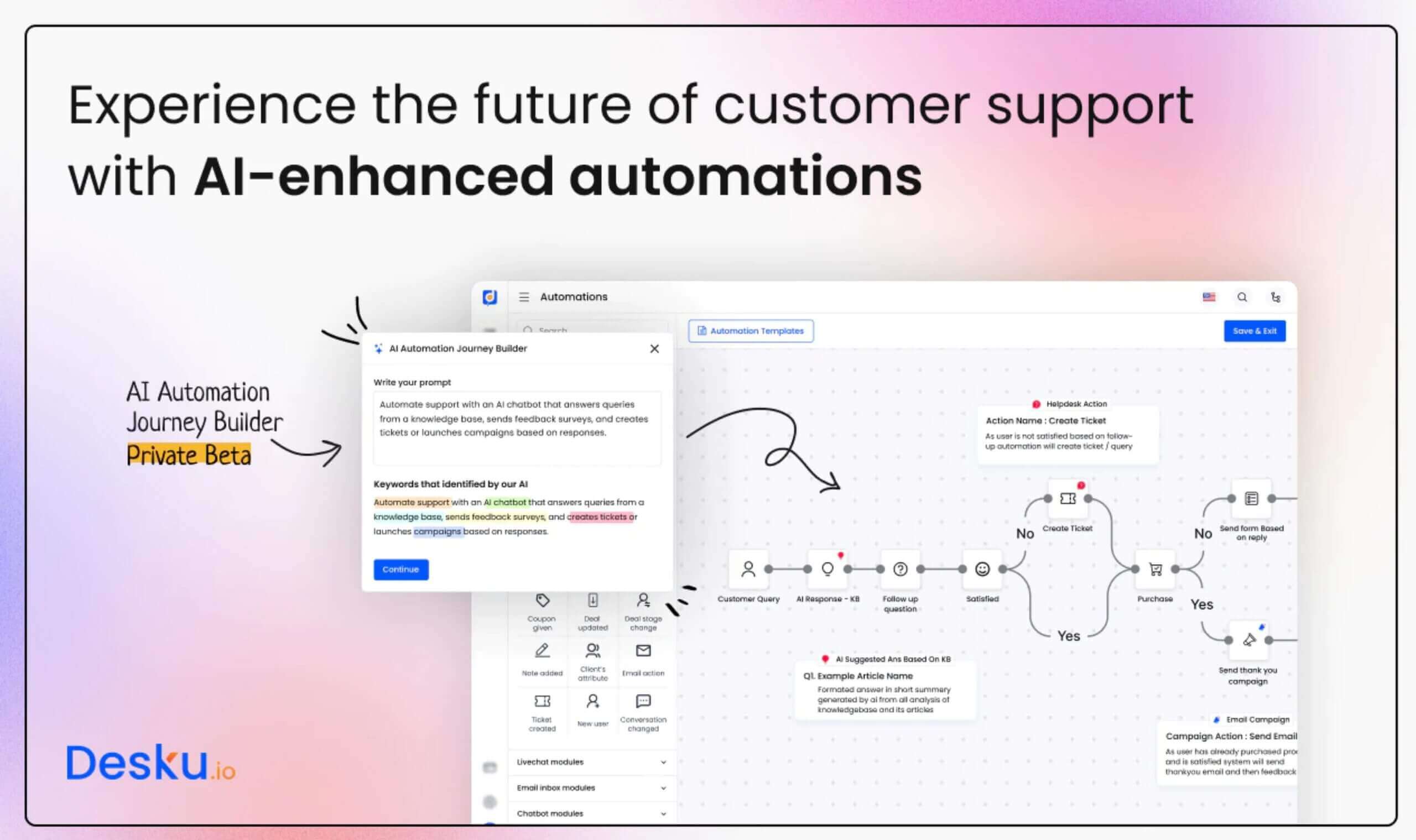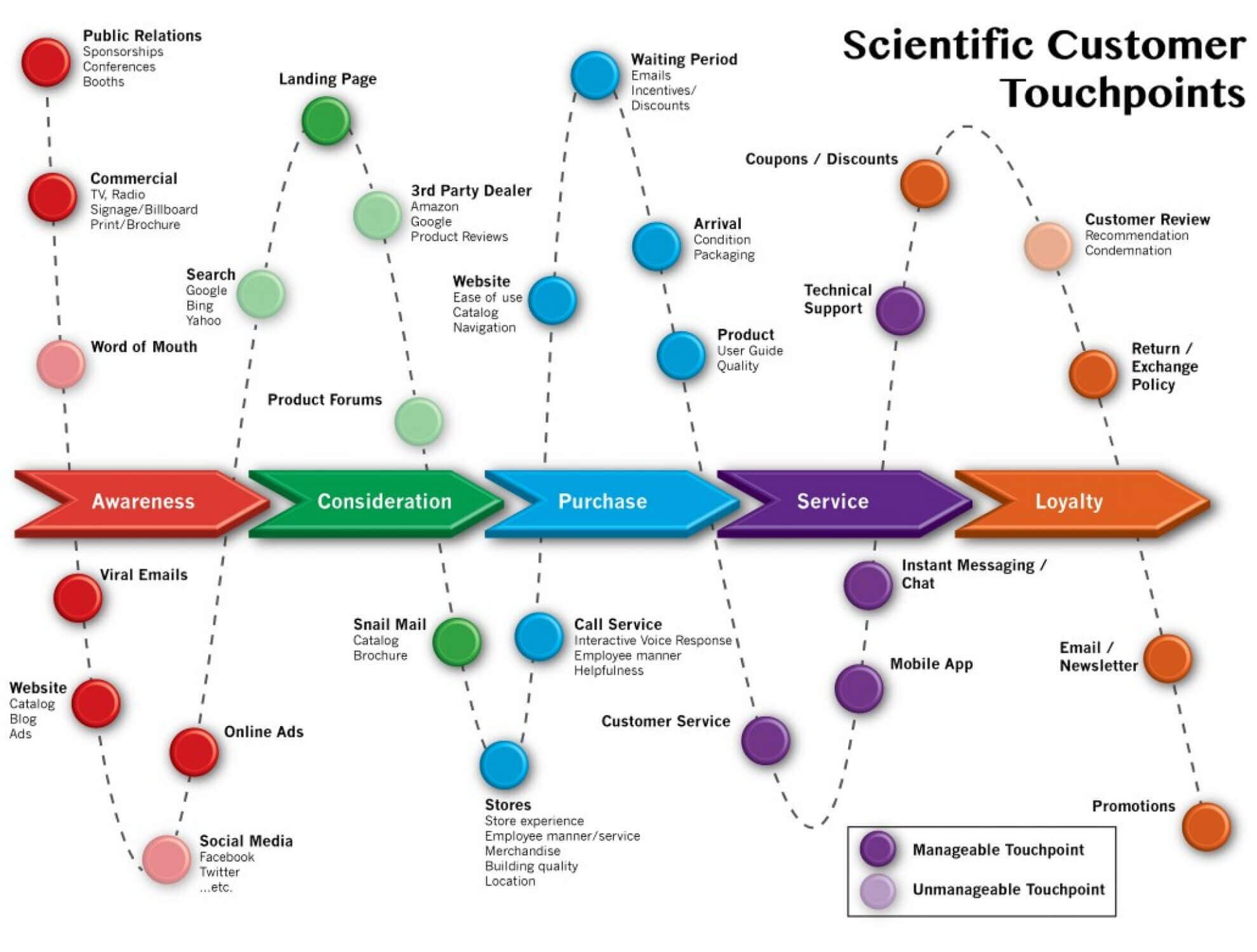Whether you’re a business owner, marketing director, or customer service manager, you understand the significance of delivering exceptional customer experiences in today’s highly competitive landscape. But optimizing customer interaction requires insights and data you can act upon, which is where customer experience analytics come into play. In this comprehensive guide, we’ll explore the concept of customer experience analytics, its importance in growing your business, and the best practices to effectively track and measure customers’ journeys. Armed with this knowledge, you can make informed decisions to enhance customer satisfaction and reap the rewards of customer loyalty.
Key Takeaway :
Customer Experience Analytics is essential for businesses to stay competitive and deliver delightful customer experiences. By understanding the customer journey, collecting and analyzing data, and measuring key metrics, businesses can improve their overall customer experience, leading to increased satisfaction, loyalty, and long-term success. Thanks for reading! I hope this article has helped you understand the different customer experience analytics metrics that businesses can track, how to track them, and how to interpret the data. If you have any questions, feel free to leave a comment below or contact me directly. I’ll be happy to help!
What is Customer Experience Analytics?
Customer Experience Analytics is all about understanding your entire customer journey and how your customers interact with your business and how you can leverage that information to improve their experience. It involves measuring key metrics like customer satisfaction, loyalty, and customer effort score and analyzing these data points to make informed decisions about how to enhance the overall customer experience. So, let’s dive in and explore the wonderful world of Customer Experience Analytics!
The Benefits of Using Customer Experience Analytics
 There are many benefits to using Customer Experience Analytics, the top of which includes having a clearer understanding of what your customers want and need. This understanding allows you to tailor your offerings, customer service, and marketing to meet (and even exceed) their expectations and increase customer engagement with the product. You’ll not only increase customer satisfaction and loyalty, but you’ll also enhance the likelihood of attracting new customers through positive word-of-mouth. By utilizing Customer Experience Analytics, businesses can gain valuable insights into customer behaviour, preferences, and pain points, helping them to make informed decisions to enhance customer satisfaction and loyalty. Some of the key benefits include:
There are many benefits to using Customer Experience Analytics, the top of which includes having a clearer understanding of what your customers want and need. This understanding allows you to tailor your offerings, customer service, and marketing to meet (and even exceed) their expectations and increase customer engagement with the product. You’ll not only increase customer satisfaction and loyalty, but you’ll also enhance the likelihood of attracting new customers through positive word-of-mouth. By utilizing Customer Experience Analytics, businesses can gain valuable insights into customer behaviour, preferences, and pain points, helping them to make informed decisions to enhance customer satisfaction and loyalty. Some of the key benefits include:
- Improved customer retention and loyalty
- Targeted marketing efforts
- Enhanced product and service offerings
- Proactive issue resolution
- Streamlined business operations
With Customer Experience Analytics, you can better serve your customers – and who doesn’t want that?
Also Read : How to Build Customer Loyalty and Trust in 2024?
Understanding the Customer Journey
Customer Experience Analytics starts with understanding the customer journey. This business process helps you identify key touchpoints and analyze customer interactions, ultimately leading to a better understanding of your customer’s needs and how to address them effectively.
Mapping Out the Customer Journey
Taking the time to map out the customer journey will give you a visual representation of every stage a customer goes through during their interaction with your business. For example, let’s say you run an online store. Your customer journey might include stages like product discovery, research, shopping, checkout, post-purchase support, and reviews!  Business process mapping is a whole other complex topic of its own, but to understand the basics, let’s take a look at this example of an online store customer journey: Product discovery – customers discover your products either through Google search, ads, or word of mouth. Research – customers research your products by reading reviews and comparing them to similar offerings from competitors. Sales Chat: Customer asks to support about any questions they might have about the product. Shopping – customers add products to their carts and proceed to check out. Checkout – Customer buys the product. Post-Purchase Support – Customers often have questions or require additional assistance after their purchase is complete. This is a great opportunity to provide a unique customer experience and build loyalty. Reviews – Reviews are an invaluable source of feedback for businesses. They offer an insight into what customers think of your products, services, and overall brand experience. Visually map your entire customer journey, and become a customer while you’re doing so in order to properly identify touchpoints in the next step.
Business process mapping is a whole other complex topic of its own, but to understand the basics, let’s take a look at this example of an online store customer journey: Product discovery – customers discover your products either through Google search, ads, or word of mouth. Research – customers research your products by reading reviews and comparing them to similar offerings from competitors. Sales Chat: Customer asks to support about any questions they might have about the product. Shopping – customers add products to their carts and proceed to check out. Checkout – Customer buys the product. Post-Purchase Support – Customers often have questions or require additional assistance after their purchase is complete. This is a great opportunity to provide a unique customer experience and build loyalty. Reviews – Reviews are an invaluable source of feedback for businesses. They offer an insight into what customers think of your products, services, and overall brand experience. Visually map your entire customer journey, and become a customer while you’re doing so in order to properly identify touchpoints in the next step.
Identifying Touchpoints Along the Journey
Once you’ve mapped out the customer journey, it’s essential to identify touchpoints where customers interact with your brand. These touchpoints could be on your website, in your store, or even through your social media channels. Think of these touchpoints as opportunities to make an impression, like greeting customers with a friendly smile (or a user-friendly interface) at every stage of their journey.  Image source In the example above there are 7 major customer touchpoints that you should’ve identified properly to take any further questions. While Identifying customer touchpoints, it is important to consider what customers are feeling and thinking at each stage. Understanding the emotional impact these touchpoints have on customers can be invaluable for providing an exceptional customer experience.
Image source In the example above there are 7 major customer touchpoints that you should’ve identified properly to take any further questions. While Identifying customer touchpoints, it is important to consider what customers are feeling and thinking at each stage. Understanding the emotional impact these touchpoints have on customers can be invaluable for providing an exceptional customer experience.
Analyzing Interactions With Customers
With your touch points identified, it’s time to analyze customers’ interactions with your business to better understand their needs. For instance, if a high percentage of folks abandon their shopping carts, it’s time to investigate and address potential reasons like slow website load times or confusing checkout processes. Customer Experience Analytics allows you to pinpoint specific areas for improvement to amplify the impact of your efforts. Do not think as a business owner while you’re analyzing these interactions, instead think of it as you being a customer and someone else is the vendor. What were the steps that you had to take in order to complete the purchase? What kind of interaction did you have with customer service? How long did it take for your query to be resolved? These are some of the questions which need to be asked while analyzing the interactions. This will help you identify any potential areas where customers may feel frustrated or could be experiencing an issue.
Collecting and Analyzing Data
Customer Experience Analytics relies on collecting and analyzing data to gain actionable insights and make informed decisions about how to improve the customer experience.
Gathering Data About Customers and Their Experiences
The first step is gathering data from various sources like website analytics, customer surveys, social media, and customer reviews. This data helps paint a comprehensive picture of individual customers’ experiences and their broader journey with your business.  Desku comes built-in with AI insights and automations to make this process much easier for you. In order to do so, you can implement many tools under your Arsenal to judge the situation correctly. For example, you can use Desku to collect data about customers’ experience with the support and major issues customers have. You can use google analytics to track customer behaviour and journey on the website. You can use CRMs to collect data about customers’ preferences, purchases, etc.
Desku comes built-in with AI insights and automations to make this process much easier for you. In order to do so, you can implement many tools under your Arsenal to judge the situation correctly. For example, you can use Desku to collect data about customers’ experience with the support and major issues customers have. You can use google analytics to track customer behaviour and journey on the website. You can use CRMs to collect data about customers’ preferences, purchases, etc.
Leveraging Actionable Insights Through Predictive Analytics Tools
Predictive analytics tools use machine learning and artificial intelligence to analyze various datasets and predict future customer behaviour, such as churn or purchase frequency. By leveraging these insights, you can get ahead in making data-driven decisions to improve your customers’ experiences and strengthen your business.
Gaining Valuable Insight Into Current and Potential Customers
Beyond analyzing existing customers’ data, you can utilize Customer Experience Analytics to evaluate potential customers’ preferences and needs. This information can guide you in tailoring marketing campaigns, product offerings, or customer support to attract and convert new customers efficiently. With predictive analytics you can identify various customer factors and take actions in time. For example, if someone has a bad experience with your customer support you will be able to identify the customers who are most likely to churn and target them with targeted campaigns before they decide to leave. This kind of analytics can help you take preventative measures in order to retain your customer base.
Utilizing Sentiment Analysis to Monitor Customer Feedback
Sentiment analysis tools evaluate customer feedback by analyzing the emotions and sentiments behind their words. This analysis enables businesses to monitor current customer satisfaction trends, address concerns promptly, and prioritize improvements to enhance the overall customer experience. Desku comes prepacked with a sentiment analysis tool where customers can give feedback on the recent interaction they had with the support team and based on that you can identify the areas where customers are most satisfied and where they feel frustrated. 
Measuring Key Performance Metrics (KPIs)
Customer Experience Analytics wouldn’t be complete without measuring key metrics to gauge a baseline for where your customer experience currently stands and track changes over time.
Establishing a Baseline for Customer Satisfaction Scores
By measuring customer satisfaction scores, you can set a baseline to understand and compare customer experiences. This metric will enable you to track improvements and ensure that your efforts are leading to increased satisfaction. Some of the KPIs you can track for customer experience analytics are :
- Churn rate
- Customer support satisfaction score
- Average customer lifetime value
- Net Promoter Score (NPS)
- Average Response Time to support ticket resolution
By gathering, analyzing, and interpreting customer experience data, you can leverage predictive analytics as well as sentiment analysis to monitor customer feedback in real time. Additionally, measuring key
Tracking Changes in Customer Loyalty and Retention Rates Over Time
Loyalty and customer retention are critical components of a successful business. Monitoring these rates over time can help you identify trends, address areas of concern, and celebrate your victories in improving customer loyalty. Churn rates are a very important metric to track as it provides insight into customer loyalty, retention, and satisfaction. If your churn rate is high, then it’s a sign that you need to take action in order to retain customers and improve their experience. Sometimes customers just leave, but more often than not its because the experience they had with you or your product was not pretty.
Monitoring Effort Score to Measure How Easily Customers are Able to Complete Their Goals
The effort score gauges how easy it is for customers to achieve their goals when interacting with your business. By monitoring this score, you can actively work to reduce barriers and ensure customers can complete their tasks with minimal effort. Is it easy for people to do what your platform is intended to do? Is it easy for people to get in touch with support or get proper resources if they get stuck on an issue? Monitor small customer touchpoints we identified earlier and keep an eye on where customer drops. Train your customer support team to reach those touchpoints, 30% of users leave on the setting up page. Set up a live chat popup on that page after one minute, if someone is stuck they get the help they want. Be proactive!
Also Read : Customer Experience Guidance: Strategies, Importance and Examples
Conclusion
So, there you have it – a comprehensive guide to Customer Experience Analytics! By understanding the customer journey, collecting and analyzing data, and measuring key metrics, you can make informed decisions that lead to happier customers and a more prosperous future for your business. Customer Experience Analytics is essential for businesses to stay competitive and deliver delightful customer experiences. By gathering data from various sources, leveraging actionable insights through predictive analytics, evaluating potential customers’ preferences, and utilizing sentiment analysis tools, companies can gain valuable insight into their current and potential customers to continually improve In conclusion, Customer Experience Analytics is a critical element in today’s competitive business landscape. By understanding the customer journey, collecting and analyzing data, and measuring key metrics, businesses can improve their overall customer experience, leading to increased satisfaction, loyalty, and long-term success. Thanks for reading! I hope this article has helped you understand the different customer experience analytics metrics that businesses can track, how to track them and how to interpret the data. If you have any questions, feel free to leave a comment below or contact me directly. I’ll be happy to help!





